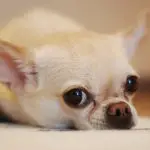The sweet and loveable basset hound dog breed
The name, Basset Hound, derives from the word “bas”, which means low in French. Many believe this dog is a genetic dwarf and were actually born from other litters of French hounds. It is a direct descendant of the bloodhound. This breed has been a round for a very long time. At a Paris dog show in 1863 is the first showing of this breed. It very quickly became popular in England. There was a debate that arose about which class it should remain in. The split revolved around whether keep it as a hunting dog or change it to a companion dog. American breeders were already developing a breed that would maintain the hunting dog characteristics but be a companion dog. Because of their slow pace basset hounds are very good for those who hunt while on foot. They are social and can either hunt alone or in a pack. The first time that the Westminster Kennel Club showed a basset was in 1884, The Basset Hound Club of America was created in 1935.
The AKC formerly recognized the basset hound in 1885 and classified it in the hound class. These dogs are to be between 12-15 inches in height for the male, the female is a little smaller at 11-14 inches. The females weigh a little less also. Their ideal weight is between 45-60 pounds and the male is 50-60 pounds. They have a life span that ranges from 10 to 12 years.
The body of the basset is well proportioned to be able to go over difficult terrain while following a trail. The bone is heavier in their short legs than any other dog breed. A lot of people think of these dogs as a little clumsy. The truth is their movements are very deliberate. The chest should be full and deep and the head is large yet very proportioned.
The elbows and shoulders in this breed will be close to the sides of the chest. The back is well extended and should be smooth and long. A full and round hindquarter is a must.
In normal hound fashion the tail should have a slight curve and be a continuation of the spine, no docking of the tail is necessary. There are no real specifics in color. Any generally accepted hound color is adequate. When being shown the distributions of colorings and markings hold no bearing.
The temperament of this breed is tranquil. They are well behaved, and have a gentle, devoted disposition. With this type of personality traits they are ideal for family life. The may be laid back but do not confuse it for being timid. They are a bit stubborn but are very loving with their owners and gentle with children. They can be trained to be quite obedient but if they find and interesting smell to track, getting their attention may prove to be difficult. The basset has a deep melodious bark.
Because of their low spine and short legs it is important to not allow them to get overweight. That will put to much pressure on their spines. This heavy long body may cause paralysis or lameness. Feeding them in small portions a few times a day is the best way to help alleviate bloating which is common in the breed.
They will do very well in a variety of living styles. The ideal situation is a house with a small yard so it can run and play. It will also do well in an apartment, as their indoor behavior is not rambunctious. Just make sure you are able to included regular exercise in its routine.
They are shorthaired and require regular brushing. They do shed constantly and may not be good for allergy suffers. Only shampoo them when really necessary. Make sure their nails remain trimmed. Their long ears prevent air from getting in so it is important that you clean them weekly.


